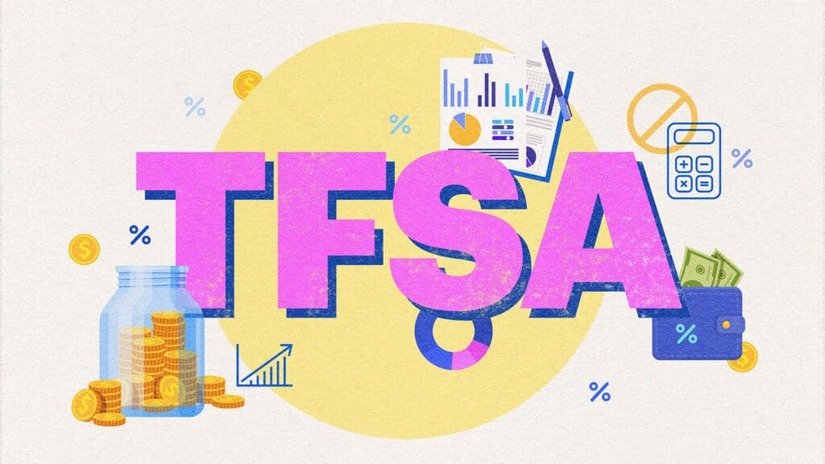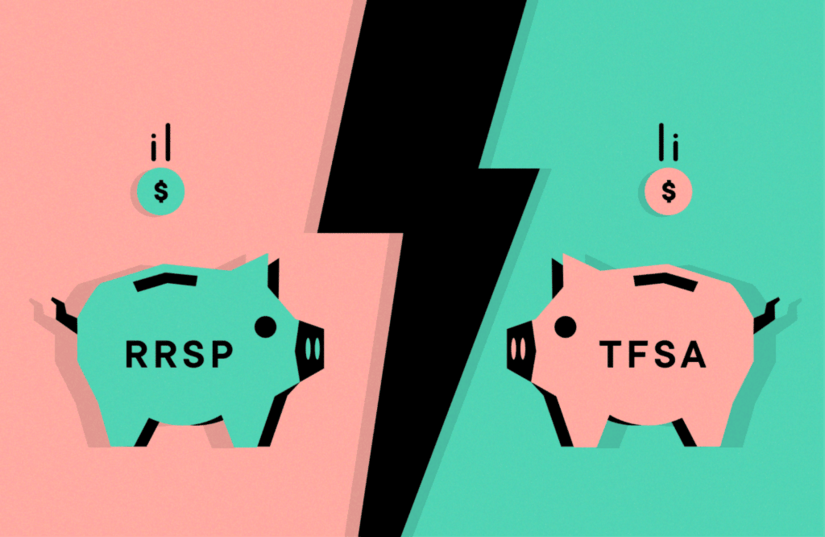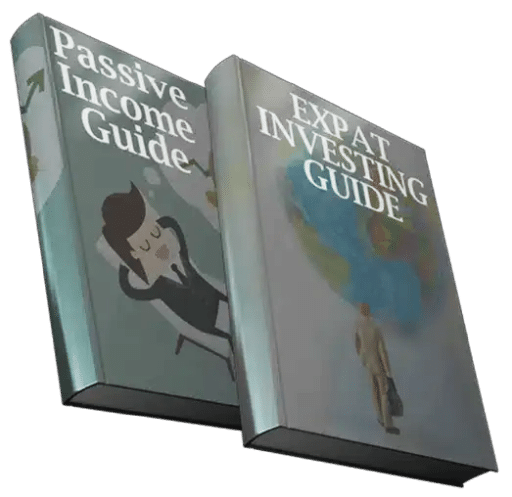Tax-Free Savings Account For Canadian And American Expats
If you are looking to invest as an expat or high-net-worth individual, which is what I specialize in, you can email me (advice@adamfayed.com) or WhatsApp (+44-7393-450-837).
This article isn’t tax or any other kind of advice, and the facts might have changed since we wrote it. If you are based in the UK then please consider reading my other article where you can find the best instant access savings accounts especially good for over those over 50 years old.
Table of Contents
What Is A Tax-Free Savings Account
A Tax-Free Savings Account (TFSA), just as it sounds, is a non-taxable account that aids Canadian taxpayers and even American expats in saving for significant financial commitments.
In order to decrease their taxes, Canadian taxpayers contribute to their Registered Retirement Savings Plans (RRSPs) at any time of the year, not only during the first 60 days of the year. TFSAs are another excellent method to save money tax-free.
There are a few things to remember before someone opens a Tax-Free Savings Account and starts making contributions since there are undoubtedly certain features of it that many Canadians are still unsure about.
Contributions, interest accrued, dividends, and capital gains all grow tax-free in a Tax-Free Savings Account (TFSA), a type of savings account available only in Canada. Also, money taken out of it is tax-free.
The funds put into Tax-Free Savings Accounts are after-tax contributions, which means that they were paid for using money that has previously been taxed. Thus, it does not lower taxable income.
Although a Tax-Free Savings Account is referred to as a savings account, it may also store bonds, stocks, and mutual funds in addition to cash. Everyone in Canada who is 18 years old or older may open an account and use it for any reason.

How Tax-Free Savings Accounts Work
In Canada, Tax-Free Savings Accounts first became available in 2009. They were designed to support Canadians in saving and investing money throughout the course of their lifetimes.
The Tax-Free Savings Account account enables individuals to save money for any purpose, not just retirement. For instance, you can put money aside for a car, school, home purchase, additional living expenditures, and/or retirement. Also, you are not need to have a job to donate.
While there are certain exceptions, most of the time a Tax-Free Savings Account’s earnings are tax-free.
Also, savers have authority over their Tax-Free Savings Accounts. They are free to make contributions, choose investments, and take money out anytime they choose without incurring fees.
When they were initially launched, they gave Canadians over the age of 18 the chance to contribute up to $5,000 after taxes annually.
Its yearly cap was raised to C$5,500 in 2013 and stayed there through 2018, with the exception of 2015, when it was briefly raised to C$10,000.
The maximum contribution for 2022 is the same as it was in 2019, which was C$6,000.
What Are The Benefits Of Having A Tax-Free Savings Account
The advantages of saving with a Tax-Free Savings Account are numerous:
Flexibility
A Tax-Free Savings Account is a method of saving that gives you the flexibility to put money aside for a variety of short- and long-term objectives. You may use it to withdraw money as needed and it can help you attain your savings objectives 2.
Tax-free Growth
You can store a range of qualifying investments in your Tax-Free Savings Account, such as stocks, cash, guaranteed investment certificates, and mutual funds, and you don’t have to pay taxes on any investment income you may generate there. Your savings may increase more quickly, tax-free, the better the return potential of your assets.
Retirement Planning
After you have exhausted your RRSP contribution limit or have reached the age of 71 and are no longer permitted to keep an RRSP, a Tax-Free Savings Account can supplement your personal RRSP by offering additional tax-advantaged savings. By making a contribution to a Tax-Free Savings Account, you can generate income that is tax-free over its entire life.
Making Withdrawals
You can take money out of your Tax-Free Savings Account without paying taxes. Because of this, the Tax-Free Savings Account may be a fantastic tool for saving for expensive purchases. When you’re prepared to spend your money, you may withdraw it tax-free. You now have more cash to spend on what you value.
How To Open A Tax-Free Savings Account
Everyone who lives in Canada, is at least 18 years old, and has a current Social Insurance number is qualified to create a Tax-Free Savings Account.
Also, you are permitted to maintain multiple Tax-Free Savings Accounts at any given time, but the combined contributions to all of them cannot exceed your annual Tax-Free Savings Account contribution limit.
How to start using a Tax-Free Savings Account for savings:
- Keep an eye out for businesses that provide Tax-Free Savings Accounts.
- Make an account application. In addition to a valid form of identification, you must supply your Social Insurance number.
- The financial institution will file a qualifying arrangement registration with the Canadian Tax Agency after your account has been approved and opened.
- Launch your Tax-Free Savings Account’s financing.
If you are not a resident of Canada, you are still permitted to create a Tax-Free Savings Account; however, any contributions made while you were a non-resident are subject to 1% monthly taxation until they are withdrawn from the account.
Contributing To A Tax-Free Savings Account
Each contribution made to a Tax-Free Savings Account throughout the year counts toward contribution space, with the exception of direct transfers from one Tax-Free Savings Account to another, and is known as the maximum amount that may be contributed to a Tax-Free Savings Account.
For every month that the account’s contributions go beyond the maximum amount permitted in a Tax-Free Savings Account, a penalty of 1% is assessed.
The only people who can make contributions to Tax-Free Savings Account accounts are those who have registered for them.
But, you can give your spouse or kid money to put into their own Tax-Free Savings Account accounts if they are not making the maximum contribution without having the income associated with you.
Any investments handed to children or a spouse or common-law partner should be considered with the possibility that they may result in taxable capital gains.
The yearly contribution limit for Tax-Free Savings Accounts specifies the maximum amount that may be made to one in a given year.
Any eligible Canadian resident who was a resident as of 2009 may begin collecting Tax-Free Savings Account contribution room; a Tax-Free Savings Account did not need to be created in order to do so.
Contributions
Your “contribution room” refers to the most amount that you are permitted to deposit into a Tax-Free Savings Account.
Furthermore, even if you have not yet opened an account, you still accrue contribution capacity for each year since 2009 that you were Canadian resident and 18 years or older.
Any unspent donation space may be carried over. For instance, if you made the maximum contribution each year up until 2019, when you only used $3 of your $6,000 in total contribution capacity, you may make the full $3 carryover in 2020.
It would have increased the yearly contribution cap for 2020 to C$6,000, making the total contribution C$9,000.
Similarly, your 2020 Tax-Free Savings Account account contribution capacity would have been C$23,000 if you hadn’t made any contributions since 2016: C$11,000 for the years 2017 and 2018 (C$5,500 for each year), and C$12,000 for the years 2019 and 2020 (C$6,000 for each year).
The Tax-Free Savings Account yearly space limit is linked to inflation and rounded to the closest $500. Moreover, the Canadian Revenue Agency states that “qualified transfers, exempt contributions, and defined dividends are not considered in the computation of contribution room.”
Over-Contributions
Any Tax-Free Savings Account contribution that exceeds the maximum allowed amount is referred to as an over-contribution.
Unless the excess contribution is removed, the Canada Revenue Agency (CRA) will impose a tax penalty of 1% every calendar month.
Account users need to be informed that withdrawals made during the year do not affect the total amount previously donated.
Incorrectly believing that your withdrawal lowered the amount you had already contributed, you can over-contribute and end up owing tax on that sum. If this happens, you could over-contribute.
In addition, taxes may be assessed on non-resident contributions made to the account and investments it makes that are illegal or unqualified.
Tax-Free Savings Account Withdrawals
Your contribution room increases as a result of withdrawal amounts, although not in the same year when the withdrawal was made. Beginning with the next year, they are accounted for.
A person could still make C$500 worth of contributions in 2020 if she made C$5,500 in that year, which had a C$6,000 contribution cap. Again, her authorized contribution room was just C$500, so if she withdrawn C$2,000, she couldn’t restore the whole amount of the withdrawal in the same year.
As there is still opportunity for contributions in 2020, she may make an extra donation of $500 in this situation. After that, she can increase her contribution space for 2021 by the amount she withdrew from the account in 2020 at the start of that year.

How To Know Your Tax-Free Savings Account Limit
Your Tax-Free Savings Account limit can be calculated in a few different ways.
First Way
Find out the maximum allowable yearly Tax-Free Savings Account contributions on the CRA’s website if your birthday was in a year after 2009 or if you turned 18 in that year. Total your highest donations from the time you turned 18 to the present.
Include any withdrawals you made from your Tax-Free Savings Account throughout the previous year. Your present maximum contribution is the amount after deducting the total of all preceding years’ contributions.
Second Way
Use the MyCRA app on your smartphone or go onto the CRA’s My Account on your PC to get the information. Further specific instructions on how to achieve it are provided below:
- Visit the CRA My Account login page.
- Choose your preferred form of login. This is the quickest method to access your CRA account if you’ve designated your bank as a sign-in partner.
- Go to “RRSP and Tax-Free Savings Account” from the tabbed header.
- Choose “Tax-Free Savings Account (TFSA)”
- Click the “Contribution Room”
- When you get to the disclaimer, click “Next.”
- Check for Tax-Free Savings Account contribution room on January 1, 2022.’ This figure is your most recent contribution room. This figure excludes any donations or withdrawals made this year.
Third Way
Contact the Tax Information Phone Service (TIPS) of the CRA by dialing 1-800-267-6999. Before you contact, double check that you have all the required authentication papers.
How To File A Foreign Trust Form 3520 and 3520-A for a Tax Free Savings Account
It is permissible for US residents residing overseas to open tax-free savings accounts, often known as TFSAs in Canada. Whether they must submit IRS forms 3520 and 3520-A since they own their TFSA is a major concern for many American expats who reside in Canada.
Revenue Procedure 2020-17 was issued at the start of the year and especially addresses foreign trusts that are exempt from filing forms 3520 and 3520-A.
These are funds established for a specific purpose, such as a college or disability fund. Sadly, TFSAs do not fulfill the standards outlined in Revenue Procedure 2020-17, which means that if your TFSA fits the parameters listed below, you must submit Forms 3520 and 3520-A.
Fortunately for the majority of foreigners with TFSAs, the forms 3520 and 3520-A are only need to be submitted if your savings account satisfies the criteria for a trust.
Yet because the IRS has never explicitly said whether a TFSA is a trust or not, many people are left in the dark about their tax obligations.
This implies that a TFSA’s classification as a trust depends on the exact provisions outlined when you started your savings account.
What Are The Two Types Of Tax-Free Savings Account
Most Tax-Free Savings Accounts are owned by one individual, who also controls all financial matters pertaining to the account, including whether or not to invest the funds stored inside the account. This person is the only one to profit from the account and is the only one who makes financial decisions for the account.
As there is no involvement from a third party, this kind of tax-free savings account does not fall within the definition of a trust and is not required to submit forms 3520 and 3520-A.
Some Tax-Free Savings Accounts, though, will be kept “in trust,” as the term goes. This indicates that a trustee—a third party with access to your account—can make choices about your funds on your behalf.
As a result, someone else may invest your funds on your behalf in an effort to expand them. This implies that you are releasing some of your control over the financial decisions you make.
If so, it will have been specified in the initial paperwork given to you by your bank or another financial institution when you created the account. Your Tax-Free Savings Account is regarded as a trust if this is the case.
If your Tax-Free Savings Account is regarded as a trust, you must review and file forms 3520 as well as 3520-A with the IRS each year, as well as include the interest earned on your personal tax return form.
How To Know If Your Tax-Free Savings Account Is A Trust Or Not
If you are confused whether your Tax-Free Savings Account qualifies as a trust or not, you should review the initial paperwork you got when you opened the account and scan them for language indicating that you are giving someone else some authority over your funds or the words “in trust.
If you are unable to find these papers, visiting the bank’s website should display a digital version of them, where you may perform a search.
How Will Tax-Free Savings Account Affect Your US Tax Returns
You must include your Tax-Free Savings Account on your personal tax return form even though the IRS does not view it as a trust since you will be earning money from the interest you will accrue on your savings, which must then be taxed.
For instance, if you received $500 in interest from your Tax-Free Savings Account, you would have to report that amount on your personal tax return form before the end of the tax year.
Tax-Free Savings Account vs Registered Retirement Savings Plan
To help you reach your investment and saving objectives, Tax-Free Savings Accounts and RRSPs both provide tax benefits. It’s critical to comprehend the distinctions and advantages of each kind of registered plan before deciding which to choose.
You can receive income after retirement thanks to an RRSP. Your yearly contribution cap is determined by your preceding year’s income, subject to a few modifications and an annual maximum cap.
The preceding year notice of assessment contains information about your contribution cap. Your donations are deductible for tax purposes, but your withdrawals are taxed.
A Tax-Free Savings Account may assist you in saving money for a variety of objectives and is not only intended for retirement. Your income is not a factor in determining how much you may give, and your donations are not tax deductible.
Your money is yours to withdraw whenever you please1, and you are not subject to tax on those withdrawals.
You are also permitted to recontribute monies removed from your Tax-Free Savings Account the next year or later years without compromising your contribution capacity in those years.

Final Thoughts
Tax-Free Savings Accounts offer a great opportunity to invest and save money for whatever goal you choose. Growth of account balances is tax-free. Also tax-free are withdrawals. You can also withdraw money whenever you want.
In addition, account users with TFSAs can roll over any unused amount of their contribution capacity to upcoming years. Amounts taken out can also be refunded to the account the following year.
This increases the maximum contribution amount, providing savers additional opportunities to increase the value of their accounts over the course of their lives.
Pained by financial indecision? Want to invest with Adam?

Adam is an internationally recognised author on financial matters, with over 760.2 million answer views on Quora.com, a widely sold book on Amazon, and a contributor on Forbes.




Hi Team,
I need help filing 3520A but before that I need to evaluate if I am support to file this or not.
We don’t help fill out forms. We aren’t an accountant. The article is for informational purposes only.